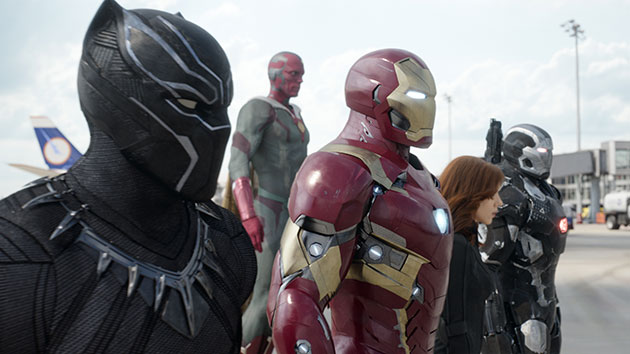There is an irony to the fact that the editors behind the tentpole blockbuster currently burning up the box office, about the trials and tribulations of a team of superheroes, were eager to emphasize the collaborative nature of making the film in the first place, when they spoke recently about their team for StudioDaily's Podcasts from the Front Lines series. Co-editors Jeffrey Ford, ACE, and Matthew Schmidt joined forces to cut the last two Captain America movies and have previously worked on other Marvel superhero films. But Civil War represents the biggest such film they have tackled in terms of its ensemble cast and winding narrative involving political and personal machinations, which force an emotional and potentially deadly split down the middle of the world’s most famous team of superheroes, the Avengers. But the hurdles Ford and Schmidt faced also included reams of technical and logistical challenges.
After all, the movie introduces a new Spider-Man to the world, along with the Black Panther character, connects back to the storyline of Captain America: Winter Soldier (2014), and foreshadows upcoming events in future Marvel films yet to come. All the while, Ford and Schmidt had to attend to the primary narrative goal of directors Anthony and Joe Russo — to tell a tale about the intimate, twisting relationships between Steve Rogers/Captain America (Chris Evans), his original best friend Bucky Barnes (Sebastian Stan), and his partner in the Avengers, Tony Stark/Iron Man (Robert Downey, Jr.).
Both editors insist none of it would have been close to a success without a massive “group effort,” as Ford puts it, in numerous categories, ranging from their assistants who designed an efficient workflow for them, to an innovative pre-visualization team, to the visual effects vendors managed by supervisor Dan DeLeeuw.
“We had about 10 different styles of cameras going on this production,” Schmidt says. “They shot some of the stuff in Imax and 65mm. There were all sorts of challenges to tie all that together, and make sure that Jeff and I didn’t have to worry about anything that was going on outside our [editing bay].”
Ford elaborates, adding that the project’s previsualization team, led by Gerardo Ramirez of Los Angeles-based company The Third Floor, was also crucial to editing what is, after all, as he puts it, “a hybrid movie.”
“Remember, [these movies] are half animated and half live-action,” Ford explains. “So in order to understand what an animated sequence or character is going to look like, you can’t really get a sense of that [without extensive previs]. We can shoot live-action elements, but they don’t really have a narrative function, or a visceral function, or an aesthetic or compositional function, until the animated elements have been added. So it is important to have a way to look at it with the directors and producers and everyone else involved with it. Matt edited the end battle, I did the airport battle in terms of the previs sections, and we laid those out before we began shooting, so that the directors could actually look at fully animated versions of those sequences. It was like watching a cartoon version of the film, but with the correct proxemics, with all the sets having been measured, the lens distances having been measured, and so on.”
There was a lot more to it, of course, and to hear Jeff Ford and Matthew Schmidt explain how Captain America: Civil War was cut together, check out their entire conversation with Studio in the video below, or right-click here to download an audio-only version.
Crafts: Editing
Sections: Creativity
Topics: Podcast Podcasts from the Front Lines Project/Case study jeffrey ford matthew schmidt
Did you enjoy this article? Sign up to receive the StudioDaily Fix eletter containing the latest stories, including news, videos, interviews, reviews and more.











Leave a Reply